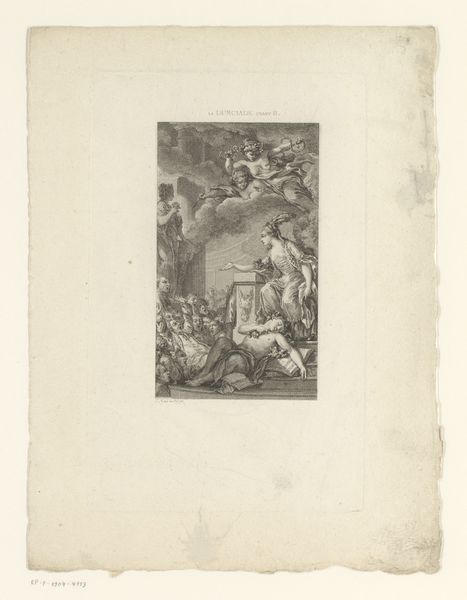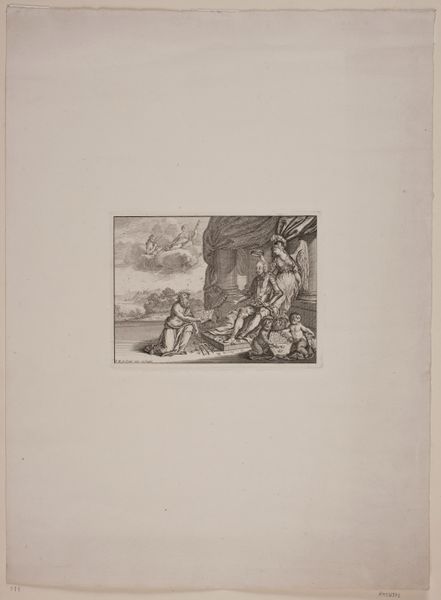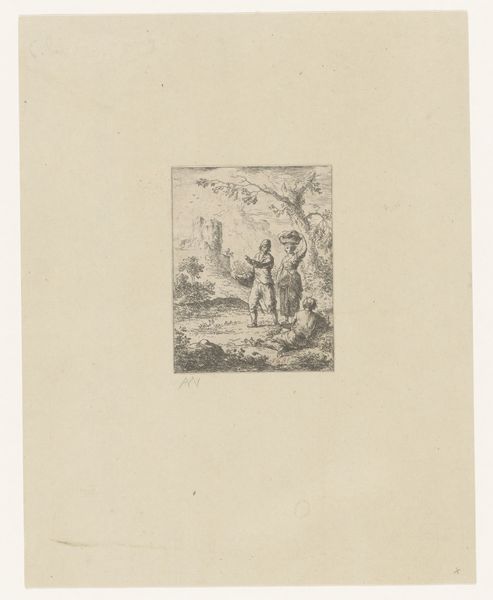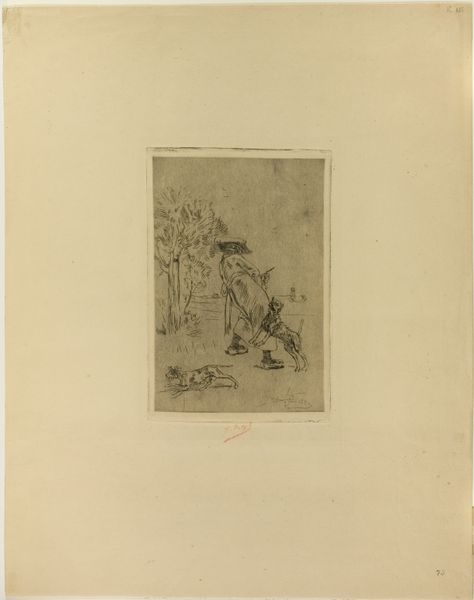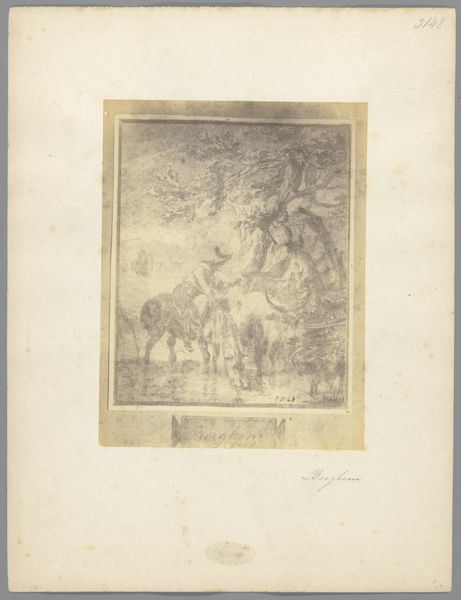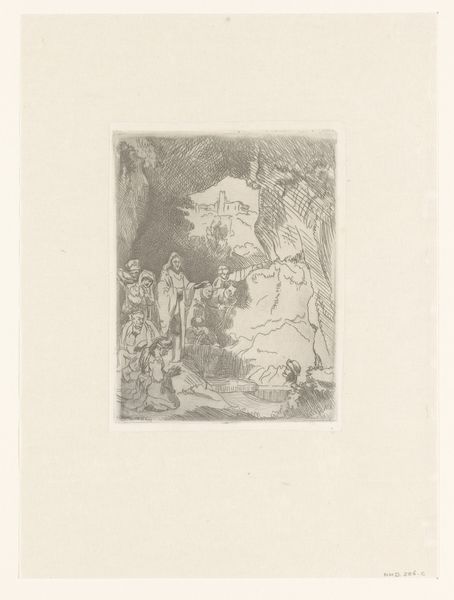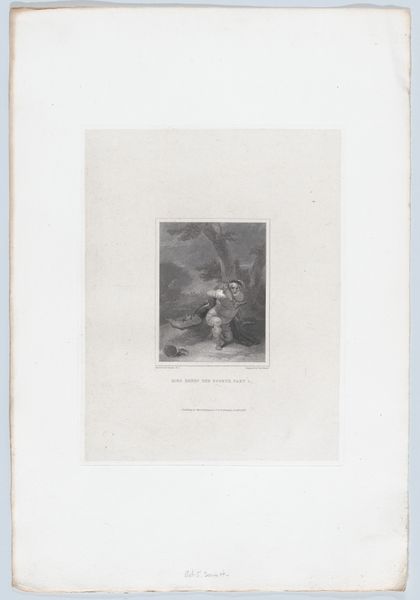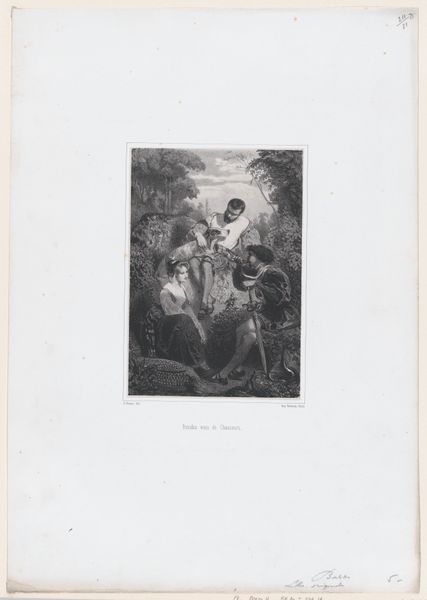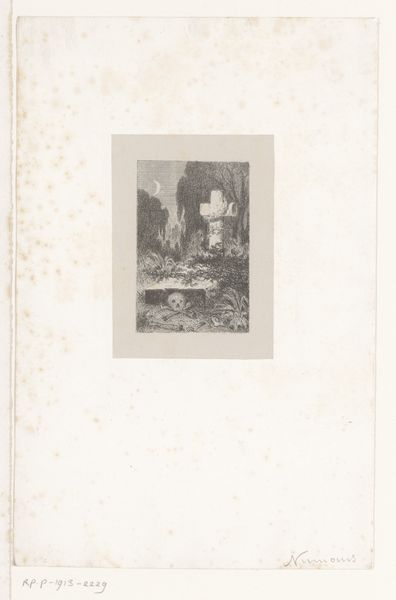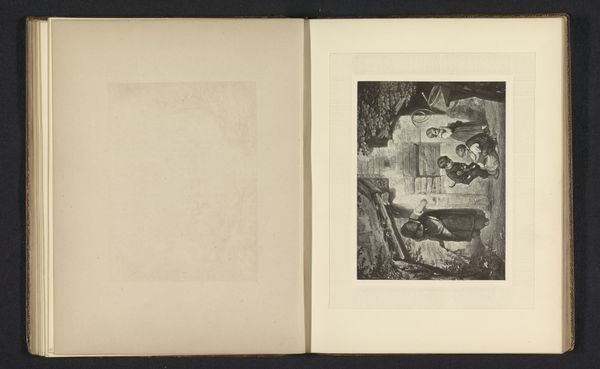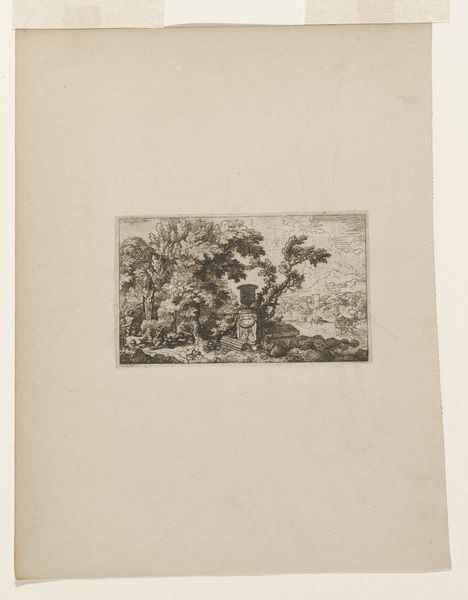
print, etching
#
baroque
# print
#
etching
#
landscape
#
history-painting
Dimensions: 4 5/8 x 3 7/8 in. (11.75 x 9.84 cm) (plate)7 13/16 x 6 3/8 in. (19.84 x 16.19 cm) (sheet)11 13/16 x 9 1/4 in. (30 x 23.5 cm) (mount)18 1/16 x 14 1/16 in. (45.88 x 35.72 cm) (mat)
Copyright: Public Domain
Editor: This is an 18th-century etching simply titled "Print," currently held at the Minneapolis Institute of Art. It depicts a group of figures in a landscape, but the limited shading makes it feel somewhat unfinished or perhaps like a study. What do you see in this piece, beyond the surface? Curator: I see a potent illustration of the complexities inherent in representations of labor and class within the Baroque landscape. The etching aesthetic lends itself to the historical narratives often depicted in this era. These kinds of scenes, with figures toiling amidst natural beauty, often mask the harsh realities of 18th-century labor practices and social hierarchies. Notice how the figures are rendered in a way that romanticizes, perhaps even erases, the realities of their existence. Do you notice the tension between the idyllic setting and the strenuous activity depicted? Editor: I do. It’s almost as if the artist wants to acknowledge the labor but soften its impact, maybe for a more privileged audience. Curator: Precisely. The lack of individual features and idealized physique serves to further sanitize labor, obscuring individuality and lived experiences. This connects directly to the economic and political structures of the time, in which marginalized peoples' existences were systemically undervalued, their voices muted, even actively erased in many cultural representations. Editor: That makes me think about how even landscape art can be a form of social commentary, even unintentionally. I had just assumed it was Baroque-era style. Curator: Yes, the lens of social critique allows us to consider artwork as reflective not just of aesthetic trends, but as deeply ingrained in its social context. Style cannot be understood divorced from meaning or effect. Editor: Thank you. I’ll definitely think differently about landscapes going forward. Curator: I'm glad! Hopefully, we've highlighted some methods we can apply when analysing any art piece.
Comments
No comments
Be the first to comment and join the conversation on the ultimate creative platform.

